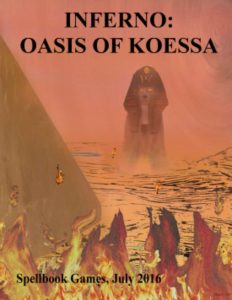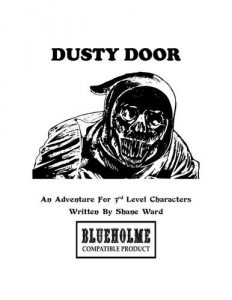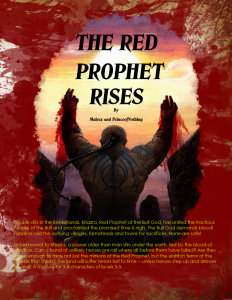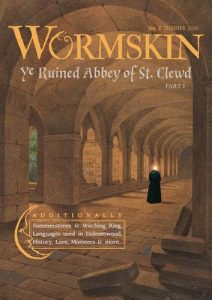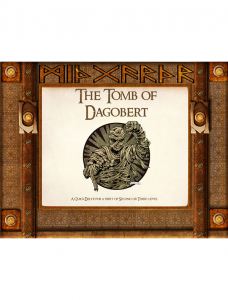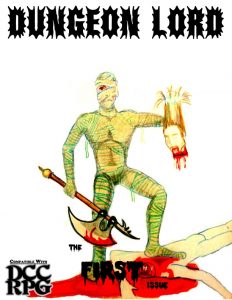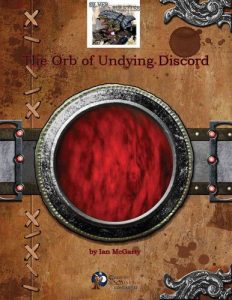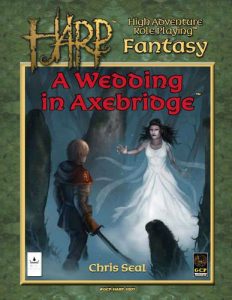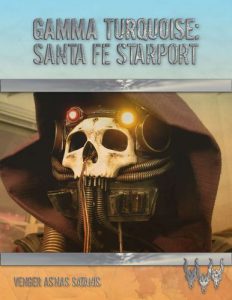There’s trouble right here in Bryce City my friend. Boring details aside, that means I ended up buying about $40 of stuff from my DriveThru wishlist. They don’t fit the adventure category, which is why some of them have been hanging out for awhile now on the list. Dungeon Lord and Wormskin were a part of that buy. Here’s the stuff that doesn’t qualify as an adventure. I promise to not do this very often and staff focused on adventures.
The Dungeon of Doom
This was promised to be a live action LARP set up as a dungeon delve. I guess it IS that. There are seventeen scenes. At one point The Dread Gazebo attacks. The party has to choose a character to die. Also, another character becomes wounded. Also, someone can get a treasure. I kind of get what they are going for, but the LARP’ing possibilities seem REALLY limited. “Choose someone to die” isn’t really my kind LARP’ing. (I think I have a write up of my kind of LARP’ing over at Fortress Ameritrash.) Anyway, most of the scenes are like the one above, choose someone to die, someone gets wounded, gain a treasure.
B/X Essentials – Core Rules
I grabbed the txt version of this for free. I think the formatted version is cheap, like $1 or so. I like B/X, it’s my favorite rules. This is ok, but not enough to make me switch from my copy of B/X and my Ruffians & Reprobates rules (on my google drive.) Beyond the formatting, I just don’t need the rules anymore. I don’t care about swimming or gale rules or boarding vessels. That’s what Rulings not Rules is for.
Fantastic Exciting Imaginative – Volume Two
I have no idea how two got on my list when I don’t have one. This is aimed at Holmes and it has a hardcore OD&D bend. And while I like the B/X rulebook I like the OD&D vibe. Unique spekks, magic items and monsters, which remind me a bit of the same sort of vibe that the items, spells,and monsters from Fight On! had. Fight On being one of the best magazines, ever, of course. Unique items with character. No Sword +1 to be found at all!
Flickpig
I recognize Desboroughs name, but I don’t recall what he’s done? He says he’s edgy and people don’t like him? Anyway, i this … adventure? You play as pigs in a slaughterhouse. You’ve got special abilities and are trying to escape. The map is random and made up of various slaughterhouse rooms and “monsters” from the people who work there. The room descriptions are quite evocative. The Freezer room is “Blinding white. Slick footing. Breath makes little, puffing clouds. It’s winter in a room. Icicles hanging down and frozen corpses swinging from hooks or sitting in blocks of ice all around.” A little grim for my tastes, but very well written and immersive!
Homeward Bound – Simple Rules for Player Owned Base
This is more of a “regional setting if you own a manor” than it is a guide for manors. Note the singular. It’s actually ONE base. 27 pages to describe the interior of one manor and the cost to upgrade it. Some shit that can happen/hooks. Methinks someone didn’t read HarnManor … the closest village is a two hour walk away. Lots of potential hooks and things going on nearby are the highlight here. So while HarnManor and the 1e DMG (and almost every other supplement dealing with domains) are better at the mechanics, this one has a decent regional setting and/or plots to then go forward with. That part could be a decent resource if you were interested in a “we own a manor” campaign. This grows on me a bit every time I read it.
The Eternal Rest
An inn in an old mortuary, staffed by skeletons. Creepy mortuary setting. Suitably macabre special dinks. You can even sell your body to him (when you die) for use as a servant in the inn for free drinks. Some plot devices are included for the DM to expand upon. But it takes 19 pages to decribe the place and you now know enough, from my review, to run it better than the book describes.
Town of Split Stone
50 pages to describe a town … with a name for all 600+ people in it. The descriptions concentrate on the people and their lives. What they are up to and so forth. Tat’s the correct approach, although it goes in to far greater detail than need be. Woven throughout the town are five little intrigues, detailed in the potential plots section in the back. It’s well written, in that it concentrates on the people a lot more than the buildings, but has so much detail it feels like a research book that a tv series is going to be built around. “The historical village of Blandmire.” WAY too much to be useful at a table.

